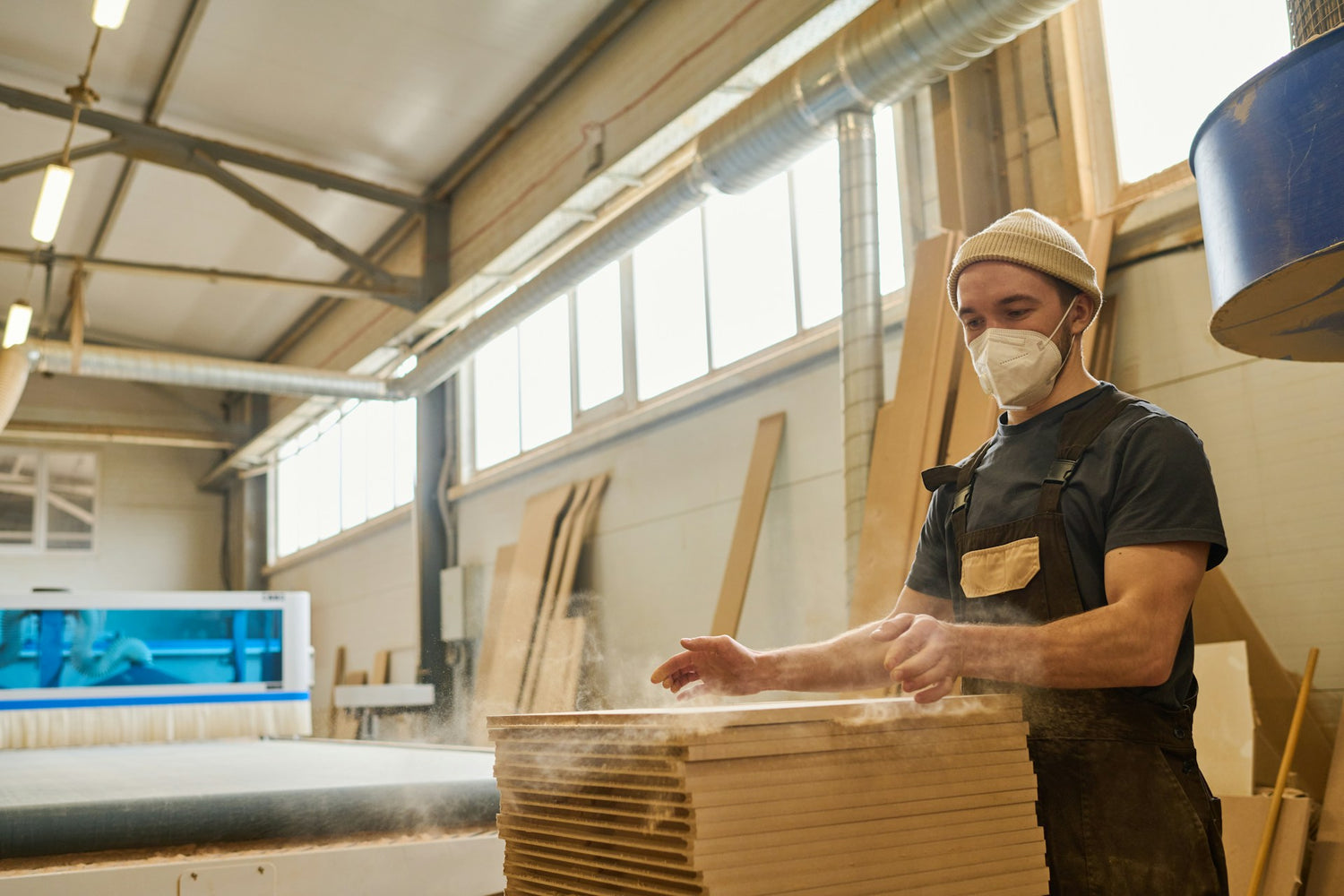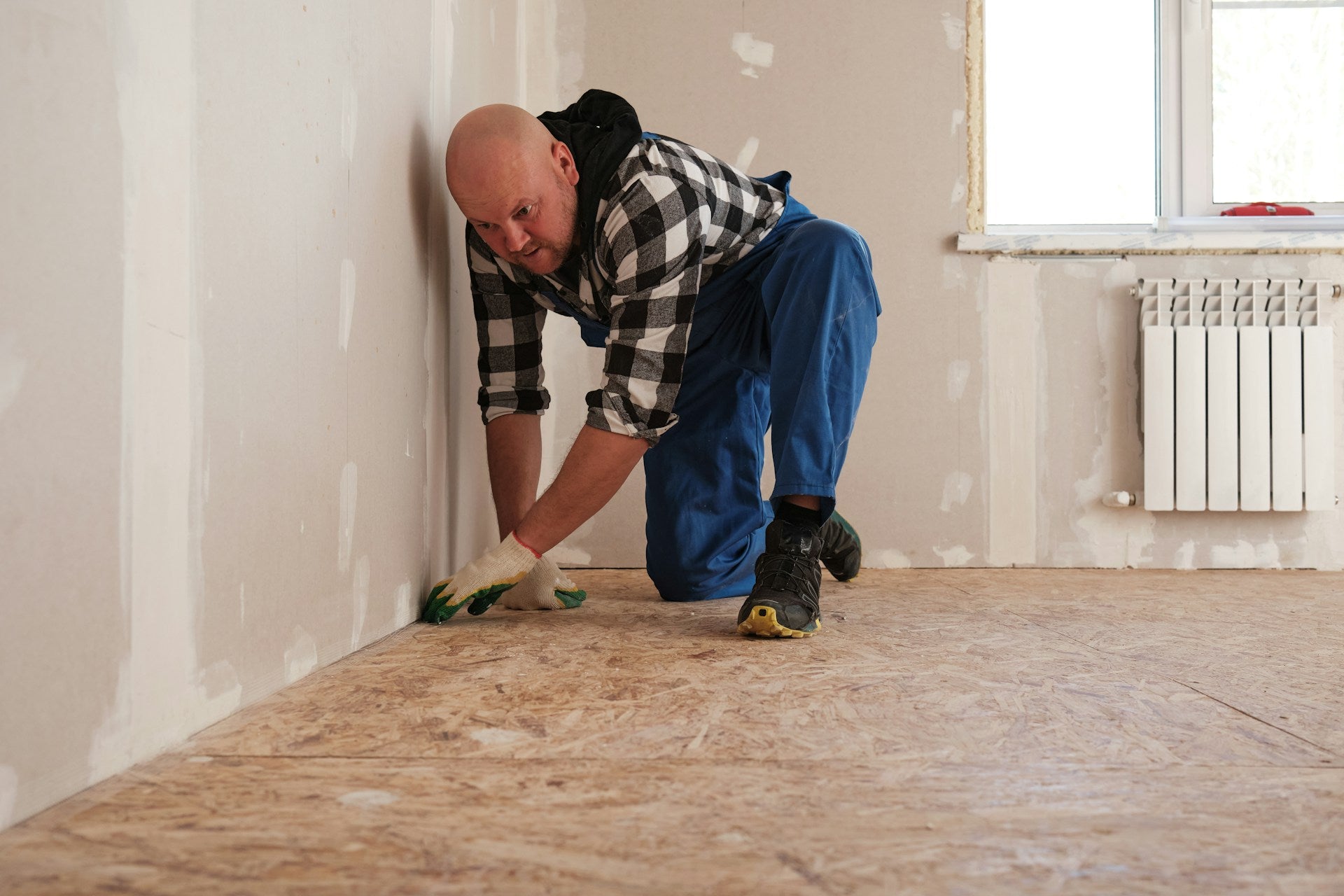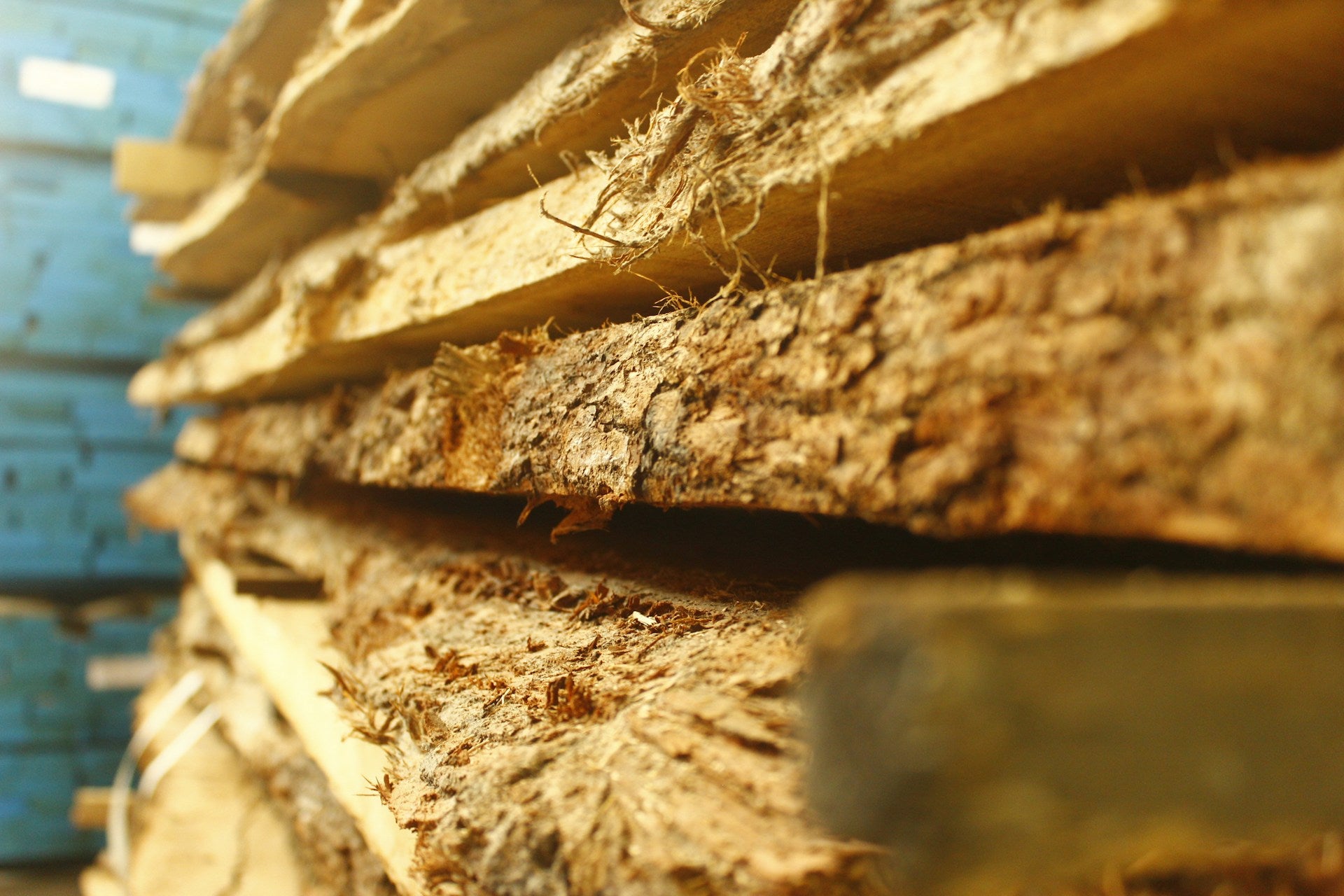When choosing lumber for your project, it's essential to understand the differences between kiln dried and pressure treated options. Kiln dried lumber offers improved stability and reduced moisture content, making it ideal for indoor applications, while pressure treated lumber is designed to withstand outdoor elements and resist decay. Knowing these distinctions can significantly impact the durability and performance of your finished product.
At Westwood Millworks, we specialize in Thermally-Treated Wood Products, which combine the benefits of both processes. Our offerings provide superior resistance to moisture and pests, ensuring your investment stands the test of time. By selecting the right type of lumber tailored to your needs, you can enhance both the aesthetics and longevity of your project.
As you explore the characteristics of kiln dried versus pressure treated lumber, consider how each type aligns with your specific requirements. Understanding these key differences will guide you in making an informed decision, ensuring your project meets both functional and visual standards.
Understanding Lumber: Basics of Kiln Dried and Pressure Treated Wood
Choosing the right lumber for your project involves understanding the key differences between kiln dried and pressure treated wood. Each type of lumber has unique processes, benefits, and applications that cater to specific construction needs.
Types of Lumber
Lumber can be categorized primarily into two types: kiln dried and pressure treated. Kiln dried lumber has gone through a drying process using a specialized kiln that reduces moisture content significantly. This makes it less prone to warping and cracking, which is essential for structural integrity.
On the other hand, pressure treated lumber is infused with wood preservatives under high pressure. This treatment protects the wood from decay, insects, and environmental damage, making it suitable for outdoor applications. Both options serve different needs, influencing your decision based on the project's requirements. Westwood Millworks offers high-quality options in both categories to ensure you find the right fit.
Kiln Drying Process
The kiln drying process involves placing freshly cut wood into a controlled environment where heat and humidity are regulated. This procedure typically lowers the moisture content of the wood to around 6-10%.
The advantages include a minimized risk of shrinkage and warping during use. The rapid drying method also kills off any pests or fungi that may be present. You can expect a consistent product that performs well in various conditions, especially for indoor use. Kiln dried lumber is ideal for projects where stability and appearance are crucial, making it a frequent choice for fine woodworking and cabinetry.
Pressure Treatment Process
The pressure treatment process entails placing lumber in a pressure chamber filled with wood preservatives. During this treatment, pressure forces the preservatives deep into the wood fibers, enhancing durability against the elements.
Typically, pressure treated lumber is treated to withstand moisture, insects, and fungi, making it perfect for outdoor projects like decks and fences. It's crucial to choose the right type of wood preservative based on the intended use. Westwood Millworks specializes in thermally-treated wood products, which combine the benefits of both methods and provide an excellent option for longevity and performance.
Characteristics and Applications of Kiln Dried Wood
Kiln dried wood is prized for its unique characteristics that enhance performance in both indoor and outdoor settings. Understanding its dimensional stability, moisture content, and applications helps you make informed choices for your projects.
Dimensional Stability and Moisture Content
Kiln dried wood undergoes a controlled drying process that significantly reduces its moisture content, typically to around 10-15%. This low moisture level enhances its dimensional stability, making it less prone to warping or cracking.
When comparing with air-dried wood, kiln dried options are superior because they stabilize more rapidly. For homeowners and builders, this means improved longevity of furniture and structures. A stable dimension helps in achieving precise fittings, particularly important in cabinetry and intricate woodworking projects.
Indoor and Outdoor Applications
Kiln dried wood is versatile for both indoor and outdoor applications. For interiors, it is ideal for furniture, cabinetry, and flooring due to its aesthetic appeal and resistance to warping. You can use it to create stylish and functional spaces without worrying about changes in moisture levels.
Outdoors, while kiln dried wood can be used, you should consider its protective treatments. It is frequently paired with finishes that enhance its resistance to weather elements. Using products from Westwood Millworks ensures quality and durability for outdoor furniture and structures, making it a reliable choice for your projects.
Durability and Woodworking Considerations
Kiln dried wood not only offers durability but also enhances your woodworking experience. Its stability reduces the likelihood of defects during construction and finishing, allowing for clean cuts and smooth surfaces. You benefit from a product that performs consistently throughout its lifespan.
When working with kiln dried wood, plan your projects carefully. Depending on the specific type you choose, adjustments may be necessary to accommodate wood characteristics. Westwood Millworks provides a range of thermally-treated wood products designed to meet your high standards for durability and quality, ensuring successful outcomes in every project.
Benefits and Challenges of Pressure Treated Lumber
Pressure treated lumber is designed to withstand harsh outdoor conditions, making it a popular choice for various construction projects. Understanding both its advantages and potential drawbacks will help you make informed decisions.
Enhanced Durability for Outdoor Use
Pressure treated wood is infused with chemical preservatives that enhance its durability. This treatment process protects against rot, decay, and insect damage, especially in outdoor environments where moisture levels fluctuate.
Using treated lumber for decking, fences, or garden beds significantly extends the lifespan of your structures. With proper maintenance, pressure treated wood can last for years, making it suitable for projects exposed to the elements.
The added durability means fewer replacements are needed over time, which can be a critical factor in your project planning. For those seeking long-lasting solutions, pressure treated lumber proves to be a reliable choice.
Chemical Preservatives and Environmental Considerations
One significant aspect of pressure treated lumber is the use of chemical preservatives, which enhance its resistance to decay. Common preservatives include alkylaryl sulfonate and copper-based compounds.
While these chemicals effectively protect the wood, there are environmental considerations to ponder. Some preservatives may leach into the soil or water over time. Therefore, if you plan to use treated lumber in gardening projects or near water sources, consider the type of preservatives used.
It’s important to follow safety guidelines when handling pressure treated wood. Wearing gloves and a mask during cutting and installation can reduce potential exposure to harmful substances. Understanding these factors will inform how you use treated lumber responsibly.
Cost-Effectiveness and Structural Applications
Pressure treated lumber offers a cost-effective solution for many construction projects. Although the initial investment may be higher than untreated wood, its durability can result in lower maintenance costs over time.
You can utilize treated lumber in a range of applications, such as building decks, framing, and landscaping. The strength and resilience of pressure treated wood make it particularly suitable where moisture and pest risks are significant.
At Westwood Millworks, we specialize in Thermally-Treated Wood Products, which offer similar durability without the use of harsh chemicals. Our products are a great alternative, ensuring safety and longevity for your projects. Choosing the right type of wood can greatly affect both your budget and the end result.
Comparing Kiln Dried and Pressure Treated Lumber
When selecting lumber for your projects, understanding the differences between kiln dried and pressure treated options is essential. Each type has unique properties that affect durability, moisture resistance, and suitability for various outdoor applications.
Key Differences in Treatment and Properties
Kiln dried lumber undergoes a heat treatment process that significantly reduces moisture content. This results in wood that is less likely to shrink or warp after installation. In contrast, pressure treated lumber is infused with chemical preservatives, making it resistant to rot and insects. This treatment often leaves a greater moisture content, which can make it more prone to warping if not managed properly.
Kiln dried wood provides a smoother surface suitable for finishing. Pressure treated lumber often has a rough texture unless sanded. For outdoor construction, the choice between them depends on the specific needs—durability versus aesthetic appeal.
Suitability for Decking, Landscaping, and Structural Work
For decking, kiln dried lumber is frequently preferred. Its stability helps it maintain shape, reducing the risk of warping over time. This makes it ideal for structures exposed to the elements, as it holds up well against moisture-related issues.
Pressure treated lumber, while effective for landscaping and structural work, may be more prone to warping due to its higher initial moisture content. It works well for posts or beams in landscaping where chemical resistance is critical. For projects requiring a finished look, kiln dried wood from Westwood Millworks excels due to its superior drying process.
Moisture-Related Issues and Longevity
Moisture-related issues can affect both types of lumber, but to varying degrees. Kiln dried wood minimizes concerns of shrinkage once acclimated, leading to greater longevity in applications like decking. It's specifically designed to remain stable, reducing the need for frequent maintenance.
Pressure treated lumber, while resistant to decay, may still invite moisture retention within its untreated core. This can lead to quicker deterioration of materials if not adequately maintained. Choosing Westwood Millworks can ensure you receive thermally-treated wood products that offer enhanced stability and resistance, prolonging the life of your outdoor projects.
Maintenance, Safety, and Finishing Tips for Lumber
Proper maintenance and safety precautions are essential for prolonging the life of your lumber. By understanding the best practices for finishing and protecting your wood, as well as recognizing potential issues like fungal decay or termite attacks, you can safeguard your investment. Attention to these details will help ensure lasting durability and aesthetics.
Staining, Painting and Sealing Practices
When working with kiln-dried or pressure-treated lumber, choose high-quality stains, paints, and sealants suited for exterior use. Staining enhances the wood's natural beauty while providing a protective barrier against moisture. Opt for water-repellent formulas to minimize swelling and warping.
For painting, ensure the wood is clean and dry. It’s crucial to apply a primer before your paint to enhance adhesion and durability. Sealants, such as water-based polyurethane, add an extra layer of protection against UV rays and moisture, which is particularly useful for external applications. Regular maintenance, including reapplying sealants every couple of years, will help maintain your wood’s appearance and integrity.
Dealing With Fungal Decay and Termite Attack
Fungal decay and termite infestation are significant threats to wood. Regular inspections are vital. Look for signs like discoloration, softness, or visible pests. If you find evidence of fungal decay, immediately address the issue by replacing affected wood and treating surrounding areas with a fungicidal solution.
To protect against termite attacks, consider using insect repellents or natural deterrents like nematodes. For outside applications, ensure proper drainage and avoid direct ground contact, as moisture attracts termites. Westwood Millworks provides top-quality Thermally-Treated Wood Products that are more resistant to these threats, ensuring you have a reliable choice for outdoor projects.
Selecting Lumber for Ground Contact and Above Ground Use
Choosing the right lumber is crucial depending on your project requirements. For ground contact applications, select pressure-treated wood specifically rated for such use. This lumber is chemically treated to withstand moisture and fungal threats.
For applications above ground, you can opt for kiln-dried wood, which is lighter and more manageable. Ensure the lumber is rated for its anticipated exposure to moisture. Both options can be enhanced with proper finishing techniques outlined earlier to maximize their lifespan. Always verify manufacturer recommendations to choose the best wood for your specific needs.




Leave a comment
This site is protected by hCaptcha and the hCaptcha Privacy Policy and Terms of Service apply.